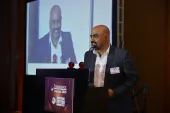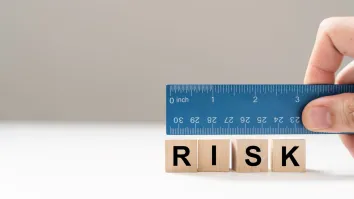
Navigating Challenges: New Vessels, New Risks
Risks associated with a proliferation of highly specialised new build offshore wind installation vessels.
Introduction
Offshore wind energy is seen as a key solution to combat climate change and reduce reliance on fossil fuels. The industry has experienced exponential growth, with capacity increasing significantly in the past decade. According to the Global Wind Energy Council (GWEC), the total installed offshore wind capacity worldwide reached over 35 gigawatts (GW) by the end of 2020. Projections suggest that this capacity could surpass 234 GW by 2030, representing an unprecedented opportunity to decarbonise the global energy sector.
The global transition to renewable energy sources has put offshore wind energy in the spotlight as a clean and sustainable power generation option. However, as the industry expands and national targets grow at a pace, numerous challenges arise, one of which is the vessels used in construction.
The vessels are a critical component of this process, but constrain construction targets based on capability, availability, and increasingly, their rate of construction. This issue is particularly concerning in the Asian market given their small existing fleet, operational limits due to Flag State and, despite numerous shipyards, vessels being produced for the domestic market. This article explores the risks associated with building new construction vessels considering the Asian market and broad insurance considerations.
The Construction Vessel Conundrum
Offshore wind projects involve the deployment of massive turbines at sea, typically located far from the coast. The rapid growth in turbine size has seen a corresponding increase in the size of foundations, requiring specialised construction vessels for their installation that are appearing on the market. Given the magnitude and complexity of offshore wind farms, the availability and capability of these vessels play a pivotal role in project success.
Development of the wind industry has seen greater freedom of site location, access to higher, less variable wind speeds and less constraint on hub heights. This has accelerated the race for larger turbines to maximise production, with a significant portion of projects now installing the next generation of 14MW+ turbines. Whilst fixed bottom installations are still the most commonly utilised foundations, floating wind is set to flourish in the coming years.
Against the backdrop of massive industry expansion, a challenge has been presented to the maritime industry’s ability to keep pace with the ever-increasing demand for vessels to build, maintain and repair the planned wind farms. Even at the predicted CAGR to 2025, an issue exists regarding the availability and capability of vessels to service the ever-growing offshore wind industry.
Construction vessels, equipped with advanced technology and heavy-lift capabilities, are a vital component of offshore wind projects required to operate in the most challenging marine environments. There are two primary types of construction vessels:
- Jack-up Vessels: These vessels are able to "jack up" above the water's surface, providing a stable platform for turbine installation. Jack-up vessels are commonly used for shallow-water projects.
- Floating Installation Vessels: Floating vessels are designed to work in deeper waters and are equipped with dynamic positioning systems to maintain their position. They are crucial for offshore wind farms located in deep-sea areas such as those found around Asia.
Whilst a variety of vessels are needed, perhaps the most critical are turbine installation, cable installation, and crew transfer/ offshore service vessels. Of these, the highest demand at present is for fixed-bottom wind-specific vessels - Wind Turbine Installation Vessels (WTIV). Whilst a large amount of new tonnage has recently entered the market, the perception is still that demand outstrips supply. As the size of turbines increases, the pool of vessels able to install those turbines decreases. On top of this, there are regional limitations driven by the project location and the vessel’s Flag State, with the highest profile example being that of the US and the Jones Act.
Risks Associated with Building New Construction Vessels
The process of building a new vessel is a major project in and of itself with significant time, cost and technical complexity involved in the design, fabrication, testing and delivery. WTIVs in particular, are multi-functional, comprising highly integrated systems and components, any of which have the potential to cause a significant failure. Each system and component must be designed and built to meet the evolving and increasingly demanding requirements. Once individually commissioned, each system must be integrated into the whole vessel, communicating in a seamless manner to guarantee their operation as required when handling high-value assets, not to mention the associated human performance element. A new vessel must undergo a so-called ‘shakedown’ period for a new crew to familiarise themselves with the vessel, operating procedures and control systems.
Any of the above differing facets present the opportunity for failure even before a new vessel is formally handed over to the client. In the current industry environment, it should be assumed that a vessel will move directly onto a project after handover. As such, if failures occur during the early operational life of a vessel, there can be significant ramifications in terms of project delays. There are, therefore, important questions as to who carries this risk, how it is measured and how it is factored into relevant insurance arrangements.
Limited Vessel Availability in the Asian Market
Whilst the global offshore wind industry is booming, the availability of construction vessels is becoming a bottleneck, particularly in the Asian market. Asia has shown a strong commitment to expanding its renewable energy capacity, but it faces several challenges related to construction vessel availability, such as:
- Competitive Demand: Asian countries are rapidly expanding their offshore wind capacity, leading to intense competition for construction vessels. China, Taiwan, South Korea, and Japan, in particular, have ambitious offshore wind targets, putting pressure on vessel availability.
- Geographic Constraints: The Asian market includes regions with challenging marine conditions, such as typhoon-prone areas, which require specialised vessels with advanced technology to operate safely.
- Limited Local Production: Few Asian countries have the specialist shipbuilding infrastructure and expertise required to produce this type of construction vessel. As a result, they often rely on imports, increasing costs and lead times.
Insurance Considerations
Failures and breakdowns of new and relatively untested vessels and equipment can have serious consequences which often include damage to project assets insured under the CAR policy. For example, a crane failure during turbine installation could cause catastrophic damage to the turbine and surrounding assets. Insurers must, therefore, ensure that any additional risks involved in the utilisation of new vessels and equipment are adequately considered in the cover provided and the pricing of that cover.
As well as physical damage concerns, such incidents can also result in significant project delays. This could be delayed due to damage to project assets (for example, the need to order or remanufacture a turbine component) or delayed due to the need to repair the vessel or equipment. Should a suitable replacement vessel not be available in the market the prospect of significant delay to the installation schedule may be realised.
This issue is not limited to vessels. As the scale of offshore wind assets grows, the equipment utilised during construction also continues to develop. Further, project-specific challenges or restrictions may necessitate the utilisation of bespoke equipment. Any failure of this equipment, such as cable burial tools, may also necessitate delay whilst a like-for-like replacement is supplied.
A final consideration is an indemnifiable event that prevents an installation from completing its scope of work. If the delay is of significant size, with these vessels being in such high demand, there will be occasions where a project is faced with the only viable option of cancelling the relevant vessel or equipment contracts. Alternatively, there may be occasions where it is more economical to keep the vessel or equipment on standby, particularly if a replacement is not readily available. In either scenario, daily costs can rapidly mount, leaving Insurers with significant claims.
Conclusion
Anecdotally, it is said that state-of-the-art offshore wind vessels entering the market some three years ago have already been superseded and are no longer considered cutting edge. Indeed, some sources go so far as to suggest the current fleet may be obsolete by 2025 if the current pace of turbine development continues.
Within that context, how does the shipbuilding industry keep pace with (a) the number of vessels required to meet demand; and (b) the ever-growing demand for capability due to the growth in turbine size and complexity?
In order to fulfil this requirement, it is estimated that a fleet of a hundred or more installation vessels will be required globally. However, outside of mainland China, it is estimated that only 11 such vessels are currently under construction.
Examples in recent years have shown us the potential severity of failures and their impact on respective projects. Even though reputable contractors are building state-of-the-art vessels, the complexity of the design and build, the speed of construction required, and the requisite number of vessels suggest that project delay due to vessel failures is set to become a growing issue.
Whilst offshore wind energy is poised to play a vital role in the global energy transition, its success hinges on overcoming various challenges, including the availability of specialised construction vessels. The limited vessel availability in the Asian market presents risks to offshore wind projects in the region due to construction delays or inflated vessel rates.
To ensure the continued growth of offshore wind energy, stakeholders must collaborate to address these challenges and explore alternative solutions. Some commentators suggest that the industry “cap” turbine size at the current model allows all aspects of the supply chain, including installation vessels, to catch up. This seems eminently sensible from a number of angles, but mostly, it would allow investment to build a robust supply chain and correspondingly resilient construction vessel infrastructure.
By doing so, the offshore wind industry can navigate the construction vessel conundrum and contribute significantly to a greener and more sustainable future.
Offshore Wind Turbine Installation Vessels (WTIV) Market Overview, IHS Markit
About the Author
Daniel Sim
Director
Daniel is a professional maritime expert with over 22 years of experience working internationally across the industry. Daniel has previously held roles as an offshore construction consultant, marine casualty investigator, and technical expert witness and served in the Royal Navy. More recently, he has assisted insurance clients on risks existing within the emerging renewables sector. Daniel works with international, multi-line insurers to provide risk engineering advice on the construction of offshore wind farms, including the design and installation of subsea cables. In addition, he provides Estimated Maximum Loss (EML) analysis services for market-leading brokers in relation to offshore wind construction and Offshore Transmission Owners (OFTOs), along with the development of bespoke modular training for major insurers on offshore installation risks and the life cycle of subsea cables.
Disclaimer
This publication presents the views, thoughts or opinions of the author and does not purport to reflect the opinions or views of Capital Consulting International (CCi, a Rimkus Company). This article does not, and is not intended to, constitute legal advice or advice of any kind.


















 Advertise
Advertise








